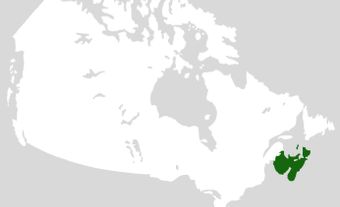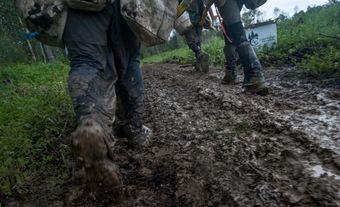
Reforestation
Many people believe a new sapling must be planted to replace every tree that is harvested. In fact, the forest regenerates naturally. After logging, young shoots grow and develop quickly because they have more room and good exposure to sunlight. In some cases, however, a helping hand is given to nature through reforestation. Reforestation consists of planting new trees and favouring the species that are adapted to each soil type. Reforestation takes place when natural regeneration is insufficient, to accelerate the ecological cycle, or when it is difficult for some species to develop following perturbations such as insect pests, diseases, forest fires or logging operations (see Forest Harvesting).
Choosing the Right Species
Generally, the cones and fruit of more than thirty species, both softwood and hardwood, are collected on sites that are specifically designed for this purpose. Those sites are named "seed orchards." On the other hand, the cones and fruit of some tree species for specific ecological regions are collected in their natural environment. The trees from which seeds are collected are free of insects and diseases and their physical characteristics are optimal: high height, straight trunk, branches on all sides, healthy looks, etc. Once the collect is over, the cones and fruit are sent to a tree seed processing centre. The seeds are then distributed to nurseries for the production of saplings. Generally speaking, the seeds are either returned to their region of origin or used in the same ecological region. They are therefore adapted to the territory where reforestation is planned.
Site Preparation
In many cases the site must be prepared before planting can take place. Scarification (stirring up of surface soil) is the most common site preparation method. A scarifier is used to mix the mineral soil and logging waste with organic matter to produce a richer soil. Because discarded branches and other waste materials are removed, planting is much easier and the growth of competing vegetation is delayed.
Reforestation
Reforestation refers to the process of planting young tree plants that are also known as "seedlings." A spade is used to dig a hole, and a seedling is placed in the hole. The seedlings are carried in bags attached to the planter's belt. For conifers, saplings are usually planted two metres apart, although the distance may vary for certain species.
The seedlings used for reforestation are produced by two methods: bare-root and container-based cultivations.
In the bare-root method, the seedlings are grown directly in the ground. When they are removed from the cultivation site, most of the root zone (the soil surrounding the roots, which contains a host of micro-organisms) remains intact. The seedlings therefore recover quickly when planted, and are able to establish contact with the new soil to obtain the water and nutrients they need to develop.
In recent years, container cultivation methods have gained in popularity for a number of reasons, including high survival rates, ease of planting, higher productivity, short nursery cultivation times (two years instead of four years for the bare-root process), and an extended reforestation period (up to the end of summer).
Large seedlings are used increasingly for reforestation because they have a better chance of overcoming competing vegetation, especially where it is abundant. Those seedlings have major advantages, since they have a better access to sunlight than the other plants from the plantation area.
Monitoring and Maintaining Plantations
If tree growth is found to be delayed in the years following reforestation due to the presence of competing vegetation, the stand is mechanically released or weeded. In some provinces, chemicals are used for this task.

 Share on Facebook
Share on Facebook Share on X
Share on X Share by Email
Share by Email Share on Google Classroom
Share on Google Classroom


